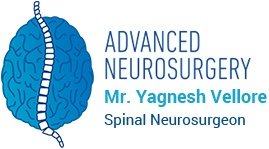Global Recognition: Mr. Yagnesh Vellore in Seoul
In July 2025, Mr. Yagnesh Vellore served as faculty at the Spineart Spine Arthroplasty Seminar in Seoul, Korea—sharing his expertise in cervical and lumbar artificial disc replacement with an international audience of spine surgeons. His contributions highlighted the evolving role of motion-preserving spine surgery and its benefits for patients worldwide.
Mr. Yagnesh Vellore, Melbourne-based neurosurgeon and Director of Advanced Neurosurgery, was invited to join the faculty of the prestigious Spine Arthroplasty Seminar in Seoul, Korea in July 2025. The seminar brought together leading spine specialists to discuss innovations in artificial disc replacement (ADR), a motion-preserving alternative to spinal fusion.
As one of the few Australian surgeons offering both cervical and lumbar disc replacement, Mr. Vellore presented on:
- Patient selection criteria for disc arthroplasty
- Surgical technique refinement for optimal implant positioning
- Long-term outcomes and complication avoidance
- Comparative data between ADR and spinal fusion
His lectures and panel discussions were met with enthusiasm, reinforcing his reputation as a global educator in minimally invasive spine surgery.
Understanding Artificial Disc Replacement
Artificial disc replacement (ADR) is a surgical procedure that replaces a damaged spinal disc with a prosthetic implant designed to preserve motion. It’s typically performed in the cervical (neck) or lumbar (lower back) spine.
Indications
ADR may be rconsidered for patients with:
- Degenerative disc disease
- Herniated discs causing nerve compression
- Sciatica
- Radiculopathy
- Chronic neck or back pain unresponsive to conservative treatment
- Discogenic back pain
- Recurrent disc prolapse
- Alternative to ACDF, lumbar fusion, PLIF, TLIF, XLIF, ALIF, OLIF when indicated
- No significant spinal deformity or instability
- No prior fusion surgery at the target level
Procedure Overview
- Cervical ADR: Performed through a small incision in the front of the neck. The damaged disc is removed and replaced with a mobile implant.
- Lumbar ADR: Accessed via the abdomen. A vascular surgeon assists. The disc is replaced with a prosthesis that mimics natural motion.
- Average hospital stay: 2–4 days
- Recovery time: 4–12 weeks depending on activity level and spine region
Outcomes and Benefits
Compared to spinal fusion, ADR offers:
- Preserved spinal motion
- Reduced risk of adjacent segment degeneration
- Enhanced recovery and return to activity
Some studies show that cervical ADR often outperforms fusion in terms of pain relief, mobility, and long-term durability. Lumbar ADR is gaining traction, though its adoption is slower due to anatomical complexity and insurance limitations.
Patient Information: What You Should Know
Before considering disc replacement, patients should:
- Undergo thorough imaging (MRI, CT, Xrays) and physical assessment
- Discuss alternatives like physiotherapy, pain management or spine fusion
- Understand risks: infection, implant migration, nerve injury, or need for revision surgery
Post-op recovery includes:
- Gradual return to walking and light activity
- Lumbar anti-flexion brace for 6 weeks
- Avoiding heavy lifting for 6–12 weeks
- Physiotherapy to restore strength and flexibility
Final Thoughts
Mr. Vellore’s faculty role in Seoul reflects his commitment to advancing spine care globally. His expertise in artificial disc replacement continues to shape surgical education and improve patient outcomes—both in Australia and abroad. Mr. Vellore routinely performs multilevel cervical and lumbar disc replacement surgery.

